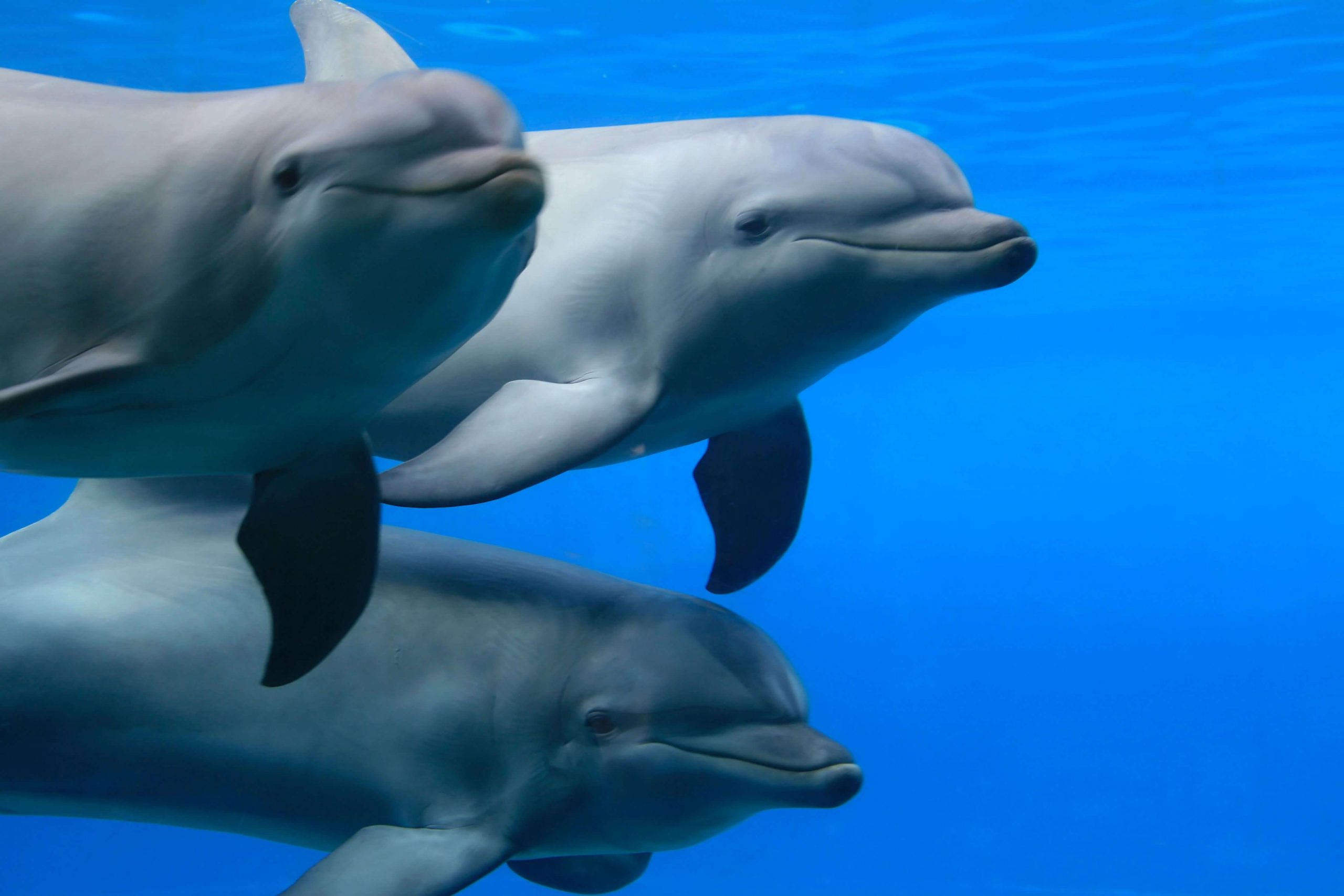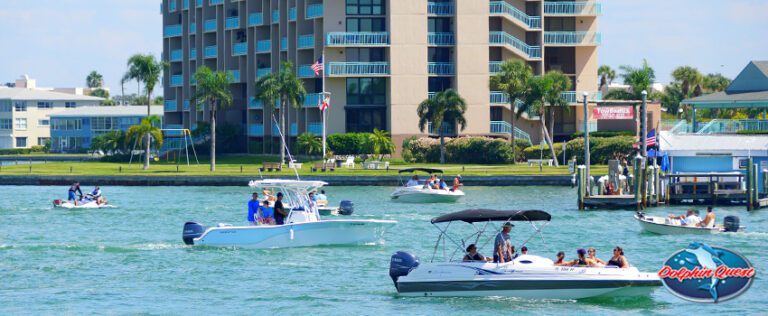One of the highlights of our fantastic Dolphin Quest tours is seeing the wildlife all around us – and the center attraction is often the groups of bottlenose dolphins that live and play in the Gulf of Mexico. A question we sometimes here is, “Are these dolphins endangered? Is it safe for them here?” So, we’d like to take a little time to talk about bottlenose dolphins and the dangers that may affect them.
Good News: These Bottlenose Dolphins Are Not Endangered!
While some species of dolphins in the world have been labeled endangered by a variety of governments, the bottlenose dolphin is not considered endangered at all! They have a very large population and their numbers are holding steady.
Several advantages help bottlenose dolphins stay out of danger when other aquatic mammals aren’t so lucky. First, there’s not really a demand for these types of dolphins to be hunted or harvested – they aren’t considered a pest, and no one wants them for their blubber, meat, or other parts. Also, the bottlenose dolphin has a very broad habitat stretching across many oceans, so they have plenty of safe places to hunt and breed.
However, this doesn’t mean that these dolphins are totally safe: They do encounter some dangers in the wild and human activities do affect them – so let’s look at some of the ways that happens.
Predators
Dolphins travel in packs and can be quite aggressive, so they don’t have a lot to fear from predators – especially here in the Gulf of Mexico. However, there are predator species that will hunt them down and eat them. Two main threats are large sharks or certain sharks that hunts packs, and killer whales that are easily large enough to hunt down a dolphin. These natural predators are no great threat compared to other dangers, but they may be driven to hunting dolphins more often if other food sources are low.
Food Resource Issues
Bottlenose dolphins usually live on a diet of fish, and need plenty to survive in healthy groups. However, human activity can be a detriment here: Overfishing can drastically lower the fish available to dolphins, forcing dolphins to move or starve. As fish populations dwindle, various countries may start catching and eating dolphins instead to make up the difference. Long-term overfishing can even permanently alter habitats and make them unlivable for the bottlenose dolphin. Sometimes new human activity and machines can simply create too much noise for dolphins to live in an area, which means they must search elsewhere for food.
Encounters with Boats and Nets
Bottlenose dolphins are curious and friendly, but they don’t really have any defenses when it comes to boats and fishing – even when these aren’t targeted at the dolphins themselves. There is a danger that dolphins can accidentally be hurt or captured during both commercial and recreational fishing enterprises, as well as related ocean activity like energy exploration and offshore drilling. Remember, dolphins do need air to breathe, even if they can hold their breath for a very long time! If they are caught in nets or other man-made objects, they may drown without help.
Like manatees, dolphins may be injured by boat propellers, too. There are groups and science initiatives that are working to reduce these dangers and rescue dolphins that may be wounded, trapped or lost.
Freshwater Issues
This issue is a little more complex, but very important to the environments around the Gulf of Mexico. You see, bottlenose dolphins need saltwater to survive in – their skin can be very sensitive and needs the saline content to stay healthy. If the dolphins are forced to encounter significant amounts of freshwater, the results are ugly: The dolphins grow sick, develop lesions across their skin, and eventually die.
Around the Gulf, many dolphins live in the environments between freshwater and deep ocean, areas like bays, sounds, and estuaries. Dolphins can have very strong territorial instincts, so they tend to stay in these areas even when they change. That poses a problem if these zones shift toward freshwater instead of saltwater. Sometimes this happens naturally – in spring, increased freshwater flow tends to lower the salinity in such areas. However, broad climate events (like especially wet years or significant temperature changes) can increase these natural events and make them dangerous for dolphins. Human developments like flood control systems or new shoreline buildings can also fill such habitats with freshwater and make them unlivable for dolphins.
These and other factors sometimes lead to what are called “Unusual Mortality Events” for bottlenose dolphins in the Gulf area. In fact, one of these events occurred throughout the first half of 2019, for reasons that still aren’t entirely clear.
Long-Term Toxic Chemical Accumulation
You may have heard about “trash islands” that form in the ocean due to bits of discarded plastics and similar materials grouping together. Well, for all the trash in the ocean that we can see, there’s also a lot of trash we can’t, and significant portion of that is toxic chemicals. These chemicals don’t just go away over time – they accumulate in fish, and in dolphins that eat those fish. Eventually, this can affect reproductive rates, overall health, and other important factors for bottlenose dolphins.
We hope you will join us to see these beautiful creatures in their natural habitat. You are guaranteed to see dolphins and you will love being out with us at John’s Pass. Book your tour today!






